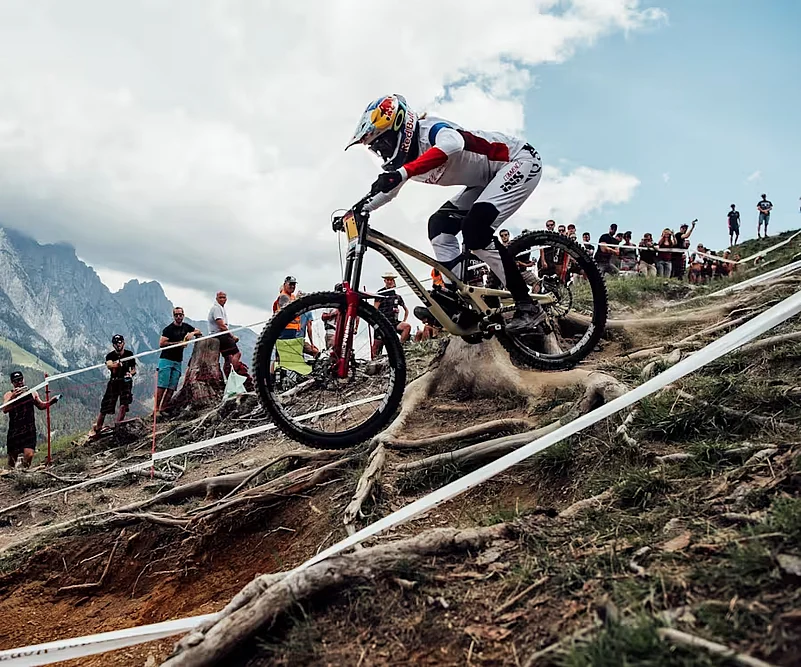Mountain biking, once a niche adventure sport in India, is steadily gaining traction among young thrill-seekers and fitness enthusiasts. From the misty hills of Himachal Pradesh to the rugged trails of Uttarakhand and the Western Ghats, more Indians are pedaling into the mountains than ever before. While beautiful landscapes have always been here, what’s changed is the role of technology. It's now making mountain biking more accessible, safer, and even cooler.
Let’s explore how tech is reshaping this offbeat sport and pushing it into the mainstream.
GPS and Navigation Tech Is Opening Up the Trails
One of the biggest challenges for mountain bikers in India used to be the lack of proper trails and maps. Riders had to rely on word of mouth or old hiking routes. Today, GPS-based apps like Strava, Komoot, and Trailforks have changed the game.
These apps allow riders to discover, record, and share routes with elevation profiles, difficulty levels, and user reviews. Whether it’s the Kalimpong loop in West Bengal or the Aravalli trails near Delhi, new and remote paths are now just a click away. Riders can also track their progress, analyze their ride data, and even compete with others virtually.
For solo riders or beginners, having a mapped route and emergency location sharing brings peace of mind and encouragement to explore further.
E-MTBs Are Making the Sport More Inclusive
One of the biggest advancements in biking tech is the e-MTB, or electric mountain bike. These come with battery-powered pedal assist, allowing even less-experienced or older riders to climb steep hills without completely exhausting themselves.
Brands like Hero Lectro, Firefox, and even international names like Trek and Merida have started offering e-MTBs in India. While they’re still pricey for many (usually starting at ₹1 lakh), rental platforms and local bike cafés in places like Manali, Pune, and Coorg are offering e-MTBs for daily use.
This means families, tourists, and casual cyclists can enjoy mountain trails without needing the fitness level of a pro.
YouTube and Social Media Are Creating a Biking Culture
Scroll through Instagram or YouTube, and you’ll find hundreds of Indian mountain biking videos with riders documenting their journeys across Leh, Sikkim, and the Nilgiris. Influencers like Vineet Sharma and Shiven Aerohave have helped bring this sport into the spotlight, showing people that mountain biking is more than just an adrenaline rush, it’s also about community, nature, and self-discovery.
These platforms offer tutorials, gear reviews, safety tips, and trail suggestions, which is especially helpful in a country where formal training facilities are limited. In fact, many beginners have taken up biking during the pandemic after watching creators document their bike-packing adventures online.
Better Bikes and Gear Are Now Readily Available
Just a few years ago, finding a good mountain bike in India meant either paying huge import duties or settling for basic models with minimal features. That’s no longer the case.
Few brands are offering MTB models designed for Indian terrains. These come with better suspension systems, disc brakes, tubeless tires, and lightweight frames. Local startups like Scolarian and Ninety One are also jumping into the segment, offering budget-friendly models under ₹50,000.
Alongside bikes, there’s been a rise in tech-infused gear, smart helmets with built-in lights, GoPro mounts, padded biking gloves, fitness trackers, and even anti-theft GPS tags for bikes.
Event Platforms and Virtual Challenges Are Pushing Participation
To keep the momentum going, tech platforms are hosting virtual mountain biking challenges and competitions. Apps like Zwift and Strava allow riders to log their rides, earn badges, and participate in nationwide leaderboards.
Moreover, mountain biking events in India, such as MTB Himalaya, MTB Kerala, and the Sikkim MTB Challenge, are getting more organized, thanks to digital registration, tracking chips, and drone coverage. These not only attract professional bikers from India and abroad but also encourage amateurs to train and participate.
Many schools and adventure tourism operators are now incorporating biking programs into their offerings, and online fitness communities on Telegram and WhatsApp keep riders motivated and informed.
Sustainability and Smart Planning Through Data
Tech is also playing a role in making mountain biking sustainable. By using ride data, trail usage statistics, and community feedback, local forest departments and tourism bodies can plan better trail management. Apps help identify high-traffic zones and erosion-prone paths, allowing authorities to divert routes or introduce rest periods for nature to recover.
Additionally, many bikers use solar-powered lights, eco-friendly gear, and digital platforms to promote Leave No Trace principles, showing how tech and sustainability can go hand-in-hand.
What Lies Ahead
Mountain biking in India still has challenges, from poor trail maintenance to a lack of awareness in remote areas. But with the rise of technology, the road ahead looks promising. As gear becomes more affordable, e-MTBs become more common, and digital communities stronger, India may soon see a mountain biking boom that rivals global hotspots.
For many Indians, it’s no longer just about going uphill, it’s about a new way of living, exploring, and connecting, powered by technology and driven by adventure.















